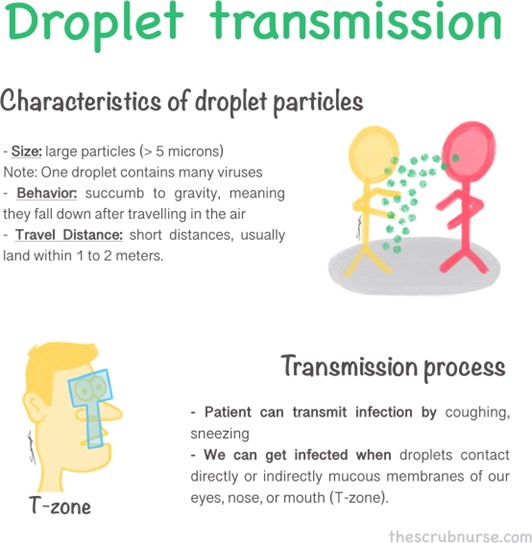A nurse is reviewing laboratory reports for four antepartum clients. Which of the following laboratory results should the nurse report to the provider?
2-hr postprandial glucose 105 mg/dL.
Negative group B streptococcus B-hemolytic.
Hgb 13 g/dL.
2+ proteinuria.
The Correct Answer is D
Choice D reason: The nurse should report the laboratory result of 2+ proteinuria (Choice D) to the healthcare provider. Proteinuria is the presence of excess protein in the urine, which can indicate a potential kidney problem or a complication related to pregnancy, such as preeclampsia. Preeclampsia is a serious condition characterized by high blood pressure and damage to organs like the liver and kidneys. Therefore, this result needs immediate attention to assess the client's condition properly and take appropriate actions to ensure the safety and well-being of both the mother and the baby.
Choice A reason:
The 2-hour postprandial glucose level of 105 mg/dL (Choice A) is within the normal range. During pregnancy, glucose levels are carefully monitored to check for gestational diabetes. In this case, the result falls within the acceptable range, indicating that the client's glucose levels are stable, and gestational diabetes is not a concern at this time.
Choice B reason:
A negative group B streptococcus (GBS) B-hemolytic result (Choice B) is actually a positive finding. It means that the client does not have an active infection with group B streptococcus, which is essential information for the management of labor and delivery. Therefore, there is no need to report this result to the provider as it indicates a favorable condition.
Choice C reason:
The hemoglobin (Hgb) level of 13 g/dL (Choice C) is within the normal range for a non- pregnant adult female. During pregnancy, blood volume increases, and hemoglobin levels can naturally decrease. However, the provided value is still within the acceptable range, indicating that the client's blood oxygen-carrying capacity is adequate and there is no immediate concern.
Nursing Test Bank
Naxlex Comprehensive Predictor Exams
Related Questions
Correct Answer is B
Explanation
Choice A reason:
Airborne precautions are implemented for diseases that spread through small airborne particles, such as tuberculosis or measles. These diseases can remain suspended in the air for extended periods and be inhaled by others. Pertussis, also known as whooping cough, is primarily spread through respiratory droplets when an infected person coughs or sneezes, making airborne precautions unnecessary.
Choice B reason:

Droplet precautions are appropriate for illnesses that spread through respiratory droplets produced when an infected person talks, coughs, or sneezes. Pertussis falls into this category as it is transmitted mainly through respiratory droplets. By implementing droplet precautions, the nurse will minimize the risk of transmission to others, including healthcare workers and other patients.
Choice C reason:
Standard precautions are the baseline infection prevention practices used for all patients to prevent the spread of infections in healthcare settings. While important, they may not be sufficient to control the transmission of pertussis, as it requires additional measures like droplet precautions due to its specific mode of transmission.
Choice D reason:
Neutropenic precautions are used for patients with compromised immune systems, particularly those with low white blood cell counts (neutropenia). The purpose is to protect these vulnerable individuals from exposure to infectious agents. However, pertussis precautions are different and do not fall under the neutropenic category.
Correct Answer is D
Explanation
Choice A reason:
The client stating, "This test is to check if my baby has diabetes,” indicates a misunderstanding of the purpose of the 1-hr glucose tolerance test (GTT). The test is performed to screen for gestational diabetes in the mother, not to check the baby's diabetes status. Rationale: Gestational diabetes is a condition where high blood sugar levels develop during pregnancy, and it can affect both the mother and the baby's health.
Choice B reason:
The client mentioning, "If the result is higher than normal, I will need to be on insulin the rest of my life,” demonstrates a misconception about the implications of the 1-hr GTT. The 1-hr GTT is a preliminary screening test, and if the results are higher than normal, it indicates the need for further evaluation, but it does not immediately mean a lifetime dependence on insulin. Rationale: Insulin therapy may be required for managing gestational diabetes in some cases, but not necessarily for the rest of the mother's life.
Choice C reason:
The client saying, "If I forget and eat before the test, then I won't be able to have the test done,” indicates a misunderstanding of the test procedure. The 1-hr GTT requires fasting before the test, typically for 8 to 14 hours, to get accurate results. However, if the client mistakenly eats before the test, it doesn't mean they cannot have the test done at all; they may need to reschedule it after an appropriate fasting period. Rationale: Fasting is crucial for accurate glucose level measurement during the test.
Choice D reason:
The client stating, "If the results are high, then I need another test to see if I have gestational diabetes,” demonstrates a correct understanding of the 1-hr GTT. If the initial screening test shows elevated glucose levels, further testing, such as the 3-hour glucose tolerance test (GTT), is required to confirm the diagnosis of gestational diabetes. Rationale: The 3-hour GTT is a more comprehensive diagnostic test used to confirm or rule out gestational diabetes.
Whether you are a student looking to ace your exams or a practicing nurse seeking to enhance your expertise , our nursing education contents will empower you with the confidence and competence to make a difference in the lives of patients and become a respected leader in the healthcare field.
Visit Naxlex, invest in your future and unlock endless possibilities with our unparalleled nursing education contents today
Report Wrong Answer on the Current Question
Do you disagree with the answer? If yes, what is your expected answer? Explain.
Kindly be descriptive with the issue you are facing.
